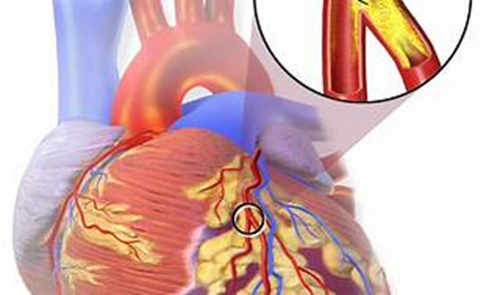The nurse is monitoring a client who just finished a meal for vasomotor manifestations of dumping syndrome. Which of the following findings indicate this occurrence?
Dizziness and pallor
Abdominal cramping and pain
Bradycardia and indigestion
Double vision and chest pain
The Correct Answer is A
Choice A reason: Dizziness and pallor are common vasomotor symptoms of early dumping syndrome. They result from the rapid shift of fluid into the intestine, leading to a decrease in blood volume and a temporary decrease in blood pressure.
Choice B reason: Abdominal cramping and pain are gastrointestinal symptoms of dumping syndrome but are not specifically vasomotor manifestations. They occur due to the rapid entry of hyperosmolar contents into the small intestine.
Choice C reason: Bradycardia is not typically a symptom of dumping syndrome. Instead, tachycardia is more commonly observed due to the body's response to the rapid changes in the gastrointestinal tract and blood volume.
Choice D reason: Double vision and chest pain are not typical symptoms of dumping syndrome. These symptoms may indicate other medical conditions and should be evaluated separately.
Nursing Test Bank
Naxlex Comprehensive Predictor Exams
Related Questions
Correct Answer is D
Explanation
Choice A: Fever and chills Fever and chills are not typically associated with the abrupt cessation of TPN. These symptoms are more commonly related to infections or inflammatory processes in the body. While infections can be a complication of TPN due to the invasive nature of the therapy, they are not a direct result of the discontinuation of the infusion. Total Parenteral Nutrition (TPN) is a method of feeding that bypasses the gastrointestinal tract. Fluids are given into a vein to provide most of the nutrients the body needs. The sudden stop in the infusion of TPN can lead to a rapid drop in blood sugar levels, known as hypoglycemia, because the body has become accustomed to the continuous influx of glucose from the TPN solution.
Choice B: Hypertension and crackles Hypertension (high blood pressure) and crackles (sounds heard on lung auscultation indicative of fluid in the air spaces) are not expected clinical manifestations due to the stopping of TPN. These symptoms are more commonly associated with cardiovascular and pulmonary conditions, respectively.
Choice C: Excessive thirst and urination Excessive thirst and urination could be symptoms of hyperglycemia (high blood sugar), which might occur if TPN is infused too quickly or if the patient has an increased insulin requirement. However, these are not the immediate concerns when TPN is abruptly stopped.
Choice D: Shakiness and diaphoresis Shakiness and diaphoresis (sweating) are common signs of hypoglycemia, which can occur if TPN is stopped suddenly. The body may have been receiving a steady supply of glucose from the TPN, and a sudden halt can cause blood sugar levels to drop quickly. This can lead to symptoms such as weakness, shakiness, sweating, and even confusion or loss of consciousness if not addressed promptly. When TPN is abruptly discontinued, the nurse should monitor the client for signs of hypoglycemia, including shakiness and diaphoresis. It is important to restart the TPN infusion as soon as possible or provide an alternative source of glucose to prevent hypoglycemia and its potential complications.

Correct Answer is A
Explanation
Choice A: Troponin Troponin levels increase within 3-12 hours from the onset of chest pain, peak at 24-48 hours, and return to baseline over 5-14 days. Troponin is a protein found in cardiac muscle fibers that regulates muscular contraction. When heart muscle is damaged, as in the case of an MI, troponin is released into the bloodstream. The elevation of troponin levels is a key indicator of myocardial infarction and can be used to diagnose and assess the extent of heart muscle damage. Troponin is the most reliable laboratory value that is expected to be elevated following a myocardial infarction, making it the correct choice in this scenario.
Choice B: Aspartate aminotransferase (AST) AST is an enzyme found in high concentrations in the liver, heart, muscles, kidneys, and brain. It is released into the bloodstream when any of these tissues are damaged. While AST can be elevated in cases of MI, it is not as specific as troponin because it is present in many other tissues besides the heart.
Choice C: Serum amylase Serum amylase is an enzyme that helps digest carbohydrates and is primarily associated with the pancreas and salivary glands. Its elevation is not specifically related to myocardial infarction but can be seen in other conditions such as pancreatitis.
Choice D: Unconjugated bilirubin Unconjugated bilirubin is a breakdown product of hemoglobin from red blood cells. Elevated levels of unconjugated bilirubin are typically associated with conditions affecting the liver or the breakdown of red blood cells, not myocardial infarction.

Whether you are a student looking to ace your exams or a practicing nurse seeking to enhance your expertise , our nursing education contents will empower you with the confidence and competence to make a difference in the lives of patients and become a respected leader in the healthcare field.
Visit Naxlex, invest in your future and unlock endless possibilities with our unparalleled nursing education contents today
Report Wrong Answer on the Current Question
Do you disagree with the answer? If yes, what is your expected answer? Explain.
Kindly be descriptive with the issue you are facing.
